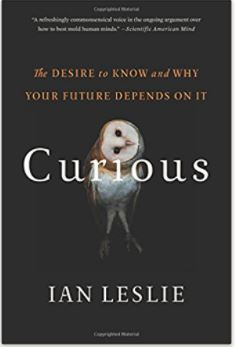- The future is unknown.
- Specific goals should change frequently. Whatever you think you are working towards at present will be different a year from now (and if it’s not, ask some deep questions).
- Learning is acquiring and applying skills so that individuals become skilled at sense-making from abundance.
- Value is accrued by sharing freely across, between and beyond specific organizations.
- Workers should discover, test, elevate and discard new ideas and processes.
- Trust is the lifeblood of modern work.
- Creativity > Skills: What you can learn above what you know; synthesis over distillation.
I have been thinking about these ideas for quite some time. I read, write, discuss and promote ideas about organizations, and the ways in which individuals move through and beyond them. The power of networks and worker mobility have altered the ways in which we need to organize ourselves and develop our professional skills.
I am not alone, nor breaking vast areas of new ground. I owe much to others whom I follow and learn from. (See @BenCpdx to see whom I connect with.) This is the model I build on.

As I consult with organizations, I get two common push-backs:
- What about protecting intellectual property (IP)?
- How can we (our organization) maintain focus on our goals if we allow a free-for-all of exploration and individual sense-making?
This post will focus on IP. I will follow up with the organizational goals in my next post.
I find people often confuse smart ideas and clever people with actual “property.” Property represents specific, recognizable, and likely commercial products. That actually limits the conversation reasonably well. Because a team within your organization is working on a new product or service line does not mean that you need to guard a specific property. In those cases, I argue that transparency and working out loud (#WOL) will benefit progress much more than expose it to danger.
IP should also mean In Progress. Whatever you feel may your organization’s secrets, or the guarded technology that allows you to out-perform your competitors, are likely much less important than you think. We live in an era of constant change, and the value of any given IP is also in flux. Context and connection reign. Thriving organizations are more concerned with culture and process than with particular property.
Even in cases where one feels the need to protect patent information, in fact the reverse is often true. Joerg Thomaier, Chief IP Counsel at Bayer: “Greater transparency on the patents covering a product would avoid situations where companies inadvertently infringe our patents… the whole industry will need to embrace the idea [of] greater transparency.” In other words, the considerable time and cost into protecting and fighting for IP could be significantly reduced by transparency.
The core of the push-back lies in the us v them industrial view of business and the traditional command-and-control mechanisms of the late industrial age. Those days are fading into the past. Creativity, synthesis and transparency are the new lifeblood of the connected age (what I call “The Learning Age”). The work, then, is to develop the skills for people and organizations to thrive in the new era.



 People are asked to learn new tools and processes, the areas of traditional learning solutions. But also, to think about how their actions improve their teams, departments (lines of business) and client experiences, the ways in which they cooperate and collaborate, and the changing environment that is rolling out around them.
People are asked to learn new tools and processes, the areas of traditional learning solutions. But also, to think about how their actions improve their teams, departments (lines of business) and client experiences, the ways in which they cooperate and collaborate, and the changing environment that is rolling out around them.

